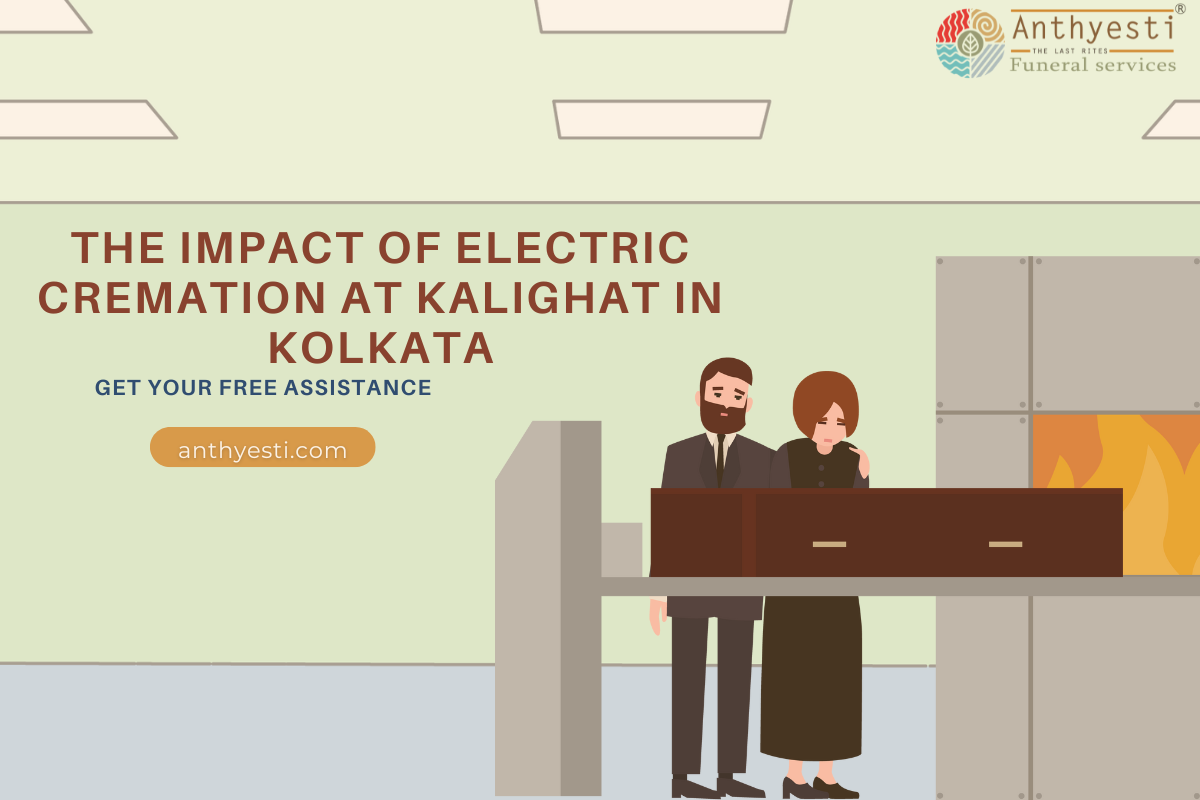Transforming Traditional Practices: The Impact of Electric Cremation at Kalighat in Kolkata
Cremation, a practice steeped in millennia of spiritual and traditional Indian customs, is witnessing a significant shift towards sustainable methodologies, such as electric cremation. In the hallowed grounds of Kalighat in Kolkata, this adaptation is more than a mere change in technique—it signifies a profound transformation in the societal, cultural, and ecological narratives of funeral customs. This article delves into the profound effects of electric cremation in Kalighat, examining its influence on community rituals, public attitudes, and environmental awareness.
The Adoption of Electric Cremation at Kalighat:
Kalighat holds a venerable position in the collective religious life of Kolkata, being a site where the sacred rites of passage are meticulously observed. Historically, these rites have been performed on wood pyres—a method filled with symbolism but fraught with ecological and environmental repercussions, such as deforestation and significant air pollution. The introduction of electric cremation offers a sustainable alternative, bringing numerous advantages over the conventional methods.
Environmental and Economic Advantages:
The pivot towards electric cremation is primarily motivated by its lesser environmental footprint. This method markedly diminishes the emission of harmful gases and utilizes fewer resources than traditional cremations, which typically consume extensive amounts of wood for each ceremony.
From an economic standpoint, electric cremation presents a more feasible option for many. With the escalating costs of wood driven by its increasing scarcity and the expense of transport, electric cremation provides a cost-effective and consistent pricing model. This not only alleviates the financial strain on bereaved families but also simplifies the entire cremation process.
Cultural and Societal Adjustments:
While the benefits are clear, the shift to electric cremation at Kalighat has been met with certain cultural hesitations. Traditional wood cremation is deeply intertwined with beliefs about the soul’s liberation journey. Transitioning to electric cremation has thus necessitated careful community outreach and educational initiatives, ensuring that traditional values are honored while highlighting the advantages of the new approach.
Anthyesti Funeral Services has played a pivotal role in this cultural shift, leading community discussions, conducting educational workshops, and distributing materials to demonstrate that electric cremation respects and maintains the sanctity of Hindu funerary rites.
Community Feedback and Responses:
The community’s reception has progressively turned more favorable. Numerous families who have opted for electric cremation report satisfaction with the process, particularly noting its alignment with their spiritual requirements and its environmental consideration. These testimonials frequently emphasize the respect and solemnity maintained during the ceremonies, which reassures others of its appropriateness and respectfulness.
Prospective Developments:
The future of electric cremation in Kalighat looks promising. With growing public awareness and increased support from governmental eco-friendly initiatives, a greater number of families are expected to choose this method. Anthyesti is dedicated to facilitating this transition, ensuring that funeral services honor both the cultural values and the environmental imperatives of today.
Conclusion:
Embracing electric cremation at Kalighat marks a significant stride towards modernizing age-old traditions to meet contemporary environmental and economic needs. Opting for this method allows families to respectfully honor their loved ones while contributing positively to the planet’s health. Anthyesti remains committed to providing compassionate, respectful assistance to families navigating these essential choices, ensuring a balance between tradition and modernity.
FAQs:
1: Is electric cremation compatible with Hindu funerary customs?
Absolutely. Electric cremation is meticulously designed to respect Hindu rituals, allowing for all customary rites to be performed unchanged, apart from the actual method of body disposal.
2: How do the costs of electric cremation compare with traditional methods?
Electric cremation is typically more economical than traditional wood-based cremation, primarily due to the high costs associated with wood procurement and its extensive labor requirements. Anthyesti provides clear pricing and supports families in understanding these benefits.
3: What are the environmental impacts of electric cremation?
Electric cremation significantly curtails pollutant and greenhouse gas emissions, making it an environmentally superior choice. It also conserves wood, an increasingly valuable resource.
4: Can all customary rituals be conducted with electric cremation?
Yes, electric cremation fully accommodates all traditional rituals, ensuring that religious and cultural needs are comprehensively met.
5: Where can more information about electric cremation in Kolkata be obtained?
Information is readily available through Anthyesti’s website or our direct office contacts, where we offer extensive details, support, and consultations regarding electric cremation and our array of funeral services.
Call us at +91 87925 63332

